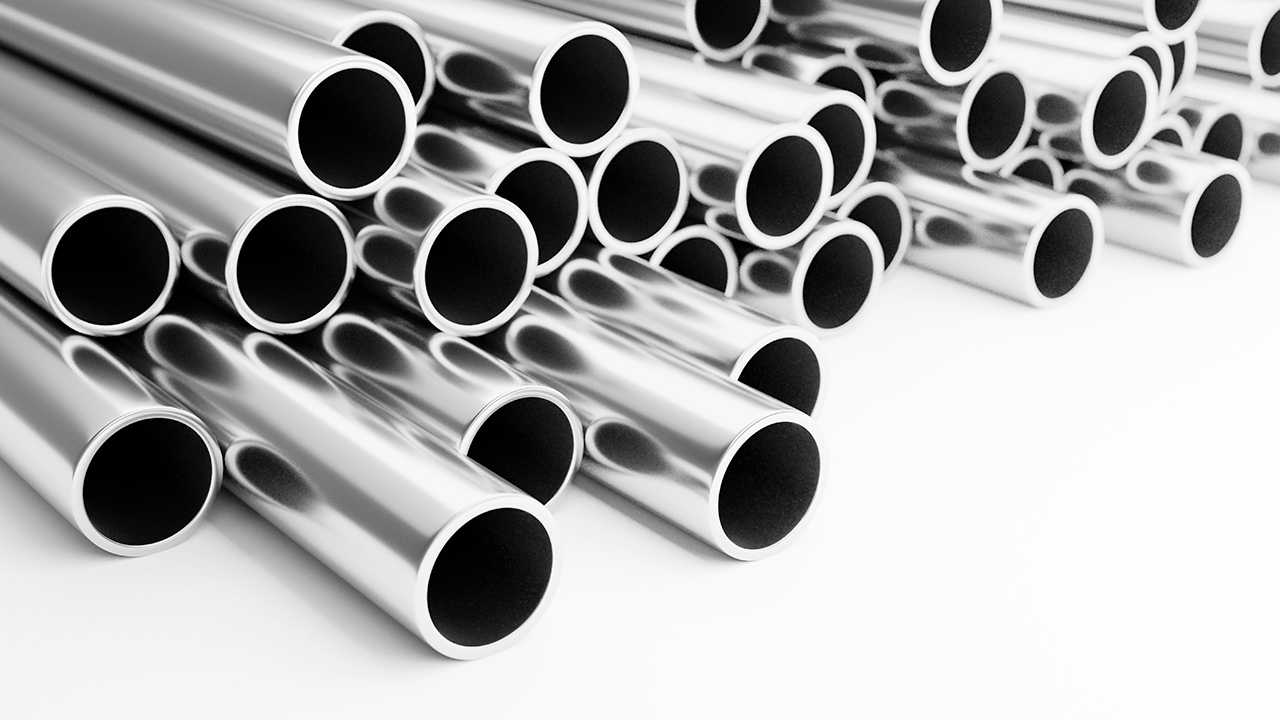How often do you think about your building’s piping? Though it may not occupy your thoughts often, piping plays a critical role in keeping your building running efficiently. From plumbing and gas to hot and chilled water, commercial piping delivers crucial elements that contribute to your building’s overall comfort. However, piping performs best and lasts longer when you take the time to properly care for it. Moreover, taking steps to preserve your piping also protects the structure of your building’s roof, where piping and equipment is often found. Zero-penetration roof pipe supports elevate piping to better handle load distribution changes and issues such as thermal expansion.
Below, we’ll explain the types of piping found in commercial buildings, why zero-penetration pipe supports are critical, and what factors influence roof pipe spacing.
Types of Piping Found on Commercial/Industrial Buildings
There are a few types of piping commonly found in commercial buildings: brass, cast iron, copper, CPVC, PFX, PVC, and stainless steel.
Brass: Brass has a long lifespan, making it a popular choice for pipes. For durability reasons, it’s best to find brass piping that’s at least 85% copper.
Cast Iron: Those experienced with cast iron cookware know just how heavy cast iron is. Due to the weight of cast iron, it has restricted usage. People typically use cast iron in sewer lines and water distribution systems in commercial settings. Cast iron is fire resistant, has soundproofing qualities, and can handle heavy pressure.
Copper: Copper provides excellent durability and resistance to corrosion, and its versatility makes it great for both cold and hot water. One reason it’s a favorite for plumbing or handling refrigerants is because it can handle high pressures.
CPVC: CPVC piping is not recommended for use in freezing conditions as the piping will split. Another downside to CPVC piping is that you can’t recycle it after removing it from the building. However, this type of piping is safe for drinking water as it has chlorine added, plus it’s easier to work with, making it a material commonly used in DIY plumbing.
PFX: PFX is another plastic plumbing pipe, but it can easily tolerate heat and cold, making it suitable for use in the water supply system. If there’s an obstacle indoors or outdoors, PFX pipes are easy to bend or twist.
PVC: While PVC piping is far less expensive than other piping options, there are downsides to PVC piping. PVC piping will split and burst open if exposed to freezing temperatures, leading to massive water leaks. PVC doesn’t handle UV rays or heat that well, which means that it has limited uses, such as for drainage or indoor use.
Stainless Steel: Stainless steel is an expensive pipe type, which means that it isn’t commonly used for commercial use. While stronger than other types of piping, it’s also resistant to fire and heat, but it is sensitive to corrosion.
Why Zero-Penetration Pipe or Hangers Are Critical
At PHP Systems/Design, we use zero-penetration roof pipe support systems for every design, which provides protection for both your equipment and your building’s rooftop. Our pipe supports offer a host of benefits, which include warranty protection, lower labor costs, vibration reduction, and an extended rooftop lifespan. Better construction means a longer lifespan—while wood supports rot and plastic can’t withstand the elements, our hot-dipped galvanized steel components with high density polypropylene bases give you lasting protection.
Once you decide on a dedicated pipe support system, it’s time to think about a few important details. PHP products are fully engineered systems, come with a registered PE Stamp as required, and are available in all 50 states. They are load tested and have offered proven performance since 1992.
What Factors Affect Roof Pipe Support Spacing?
Many factors affect spacing for roof piping support, including the type of roof you have, local codes, and more. Let’s explore a few of these considerations in depth.
Environmental Stress
Climate plays a significant factor in the spacing of your roof pipe supports. If you live in an area with heavy snowfall or high winds, you need more supports that are closer together.
Local Codes
Building codes affect how far apart pipe supports can be. The standard maximum spacing for pipe supports on rooftops is 10 feet; this may be somewhat different depending upon where you live. Some locations may require tighter spacing and more supports.
Contents Of The Pipes
You also have to consider what the pipes will contain. If you intend for the contents of the pipe to include something that can cause damage to your building if the pipes rupture, or even some form of hazardous material, you’ll need your supports closer together. If there’s nothing that can damage your building upon rupture, then you can have your supports further apart.
Pipe Size
Wider pipes contain more material, which means they weigh more than pipes with a smaller diameter. Not only that, but wider pipes can hold more content, which adds weight on top of the weight of the pipe.
Roof Type
Before making changes to your roof, it’s always wise to check your warranty and err on the side of caution. The roof itself has weight to it, and you have to consider the type of roof you have. Some roof types become soft in hotter weather, which causes the roof to sink when you add the weight of the supports.
When you rely on us, you quickly understand why we’re America’s leading source for equipment and roof pipe support systems. Whether taking into account the temperature of the pipe or the size, there’s nothing we can’t handle. Learn why our motto is ‘Build It Right.’




